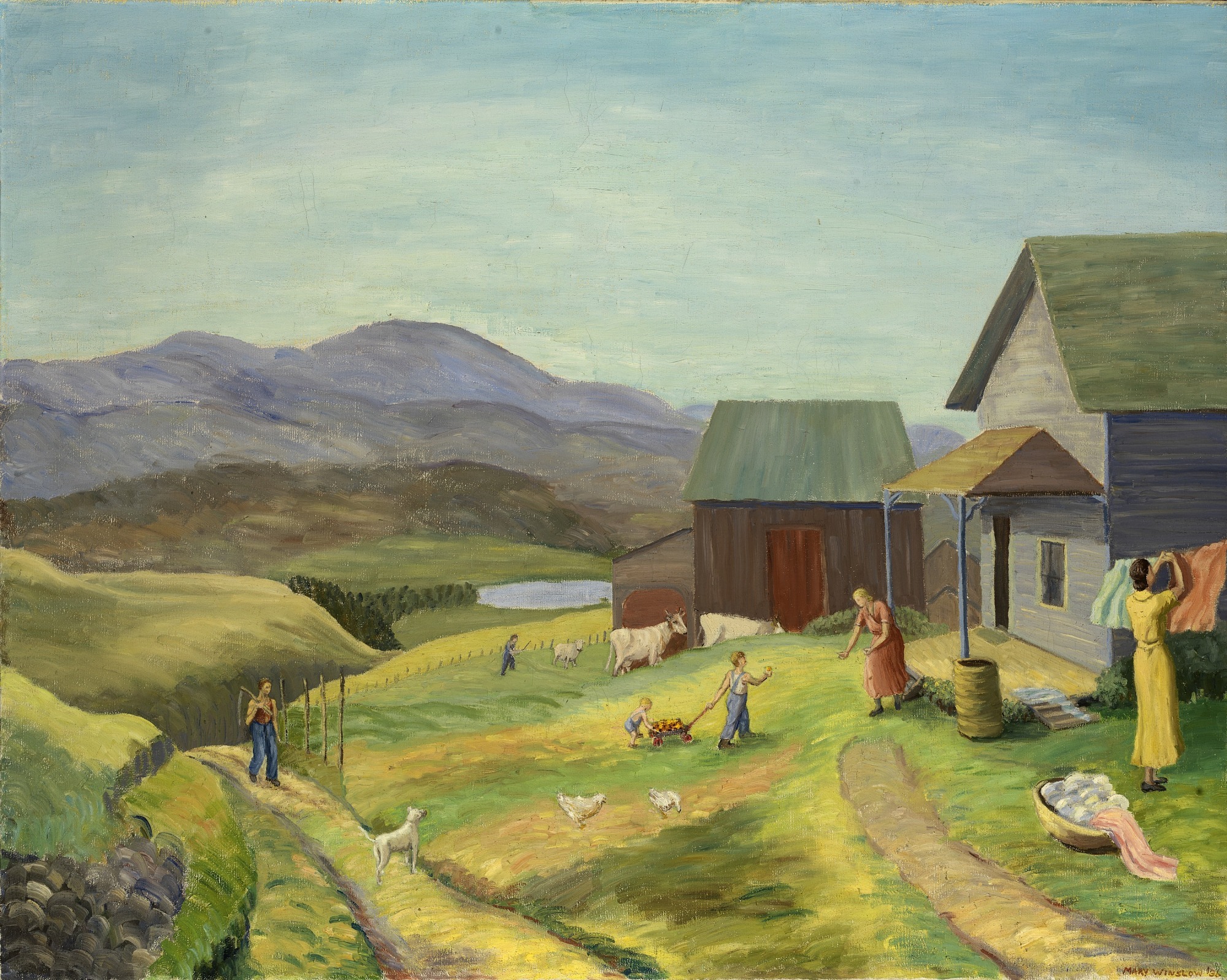
Untitled farm scene, Mary Winslow, 1936 / Wikimedia Commons
Buildings are unavoidable. They affect all of us. We see them, touch them, pass by them, and enter them; we are born, and often die, inside them; and we live and work in and around them. We spend almost our entire lives in their shadow. We tend to believe that we shape our buildings; we rarely stop to think seriously about how they shape us. We may express a judgment concerning our likes or dislikes about a building, but we almost never identify why we feel a certain way toward a building or because of it.
One basic fact about buildings is they are public, which means they are always visible, and they occupy considerable chunks of space. Hence, they act on us in different ways and through different modes: they are oriented as much as they are orientational. They face us or loom above us. They attract our sight up, forward, or away. They also have surfaces, masses, textures, and apertures, which means they invite our imagination in myriad ways. Each building looks a certain way; it may look as if it’s going to crumble or as if it’s going to last, sturdy and imposing, for eons. A building can look elegant, serene, proud, or dignified—or sterile, cold, brutal, or unkempt.
Buildings engage our senses, provoking certain feelings from us in and around them: we feel embraced as much as we feel alienated. A building can make us feel its warmth, coarseness, fluidity, or airiness. Beyond their immediate interaction with us, buildings embed themselves into our memory: they remind us of events, people, and values. And for that, they acquire additional appreciation over time.
Visually, they are public property, even when they are privately owned. In that sense, we may expect buildings to affect our mind and psyche, but we should also consider the relationship between buildings and the economy, the other pan on the scale, without which we end up with buildings that are unaffordable and inaccessible. Surely, a building’s appearance is enduringly important, but how it arrived at that appearance is equally so.
Buildings influence the cost of living—the rising price of property exacerbates the cycle of inflation, increasing the cost of products. The location and the form of the building determine the property value, and both factors are themselves determined by the process of the building’s creation: how we plan the city dictates location, and how we design it shapes form.
Buildings affect our pocketbooks. They require substantial amounts of wealth to erect, and more to maintain. Moreover, they have traditionally required a comprehensive economic network of suppliers of building materials and workers, on- and off-site. Work on a building may never finish, a reality that invites layers of contributors, engaging their skills into its making and development.
Indeed, all our living revolves around buildings, and the quality of our life often depends on the balance they strike between their function and form. Through their form they communicate with us, and consequently we form a relationship with them; we love or hate them, we care for and maintain them, or we mistrust and disdain them. We is a key word here, because buildings are physical and metaphorical loci for aggregation.